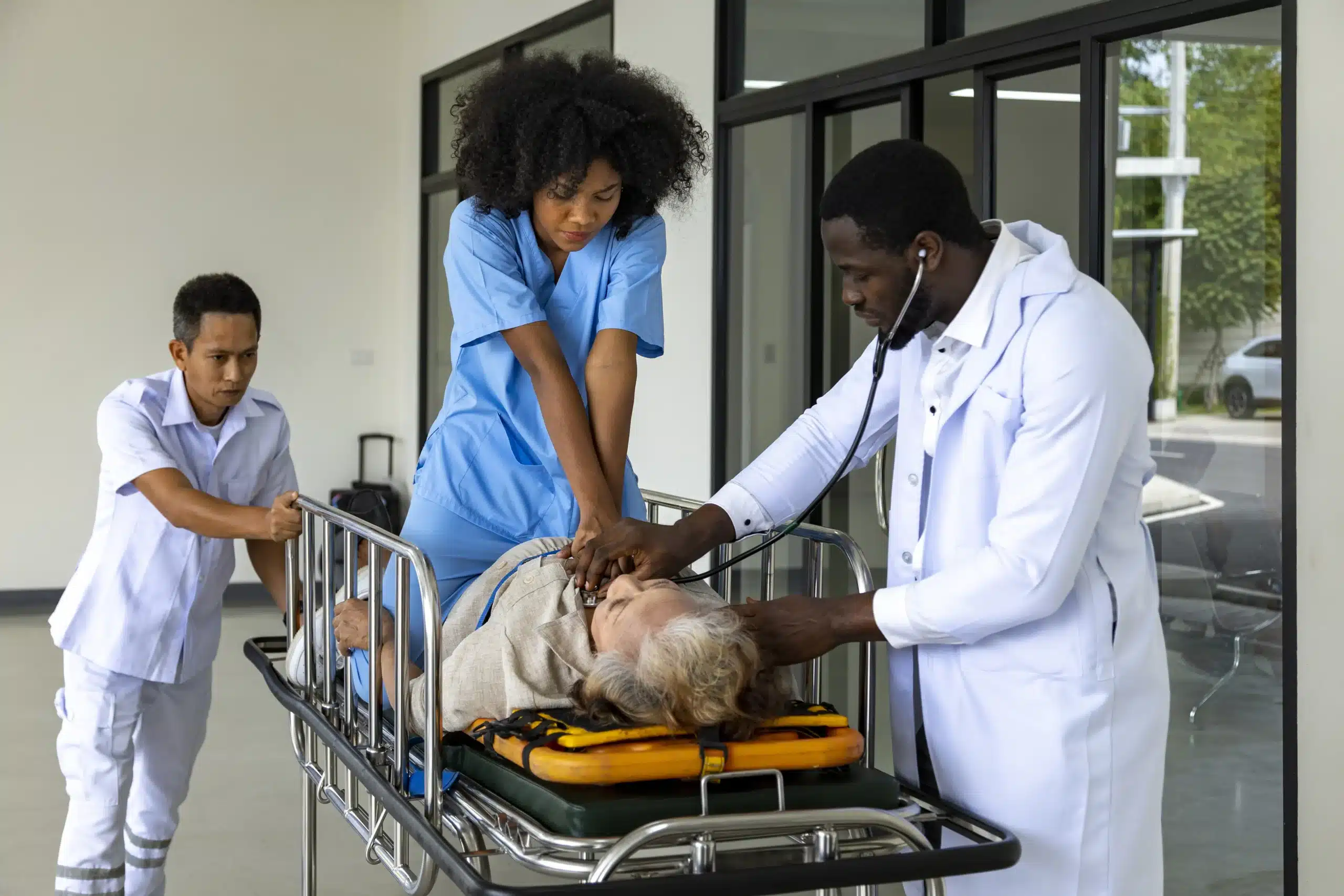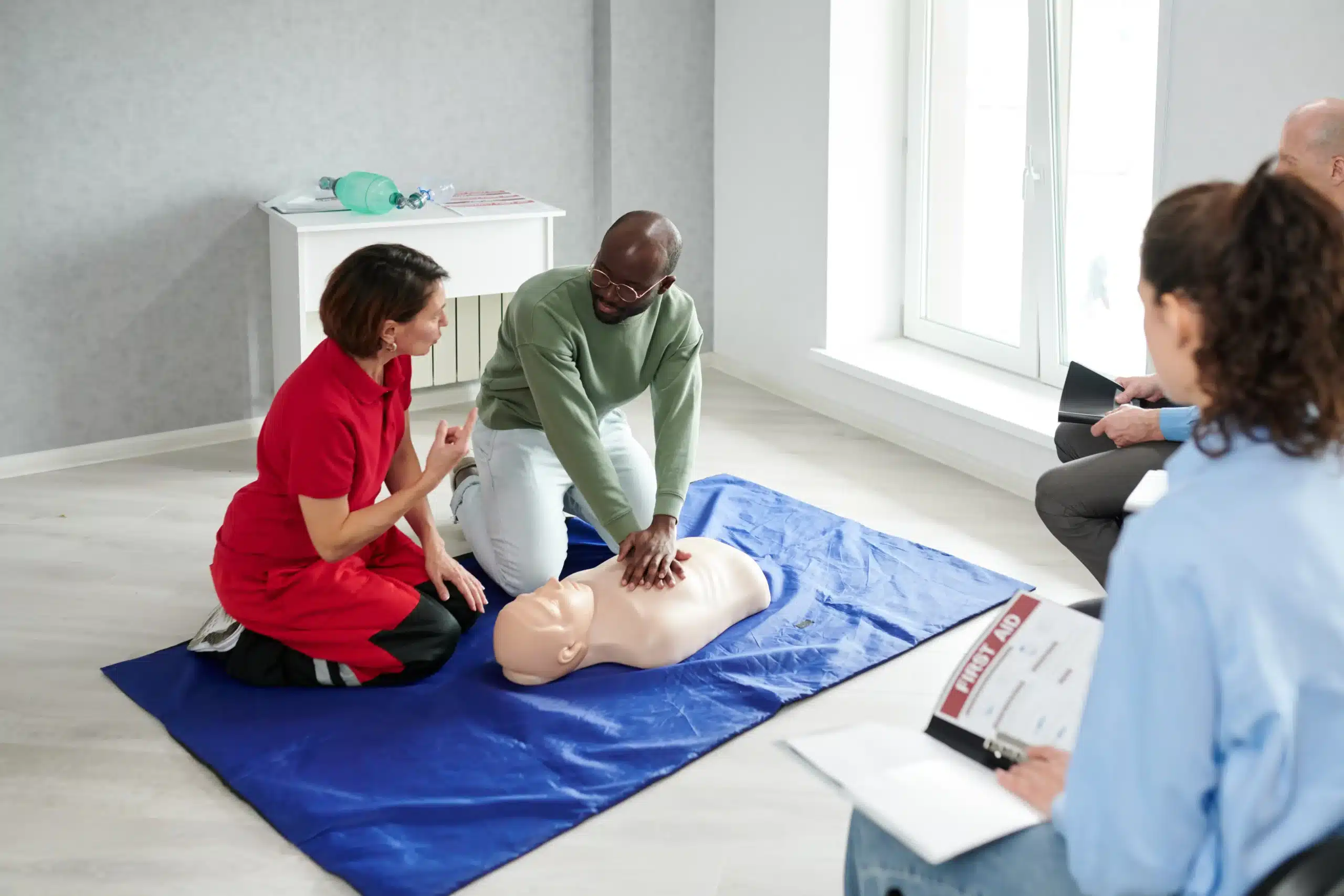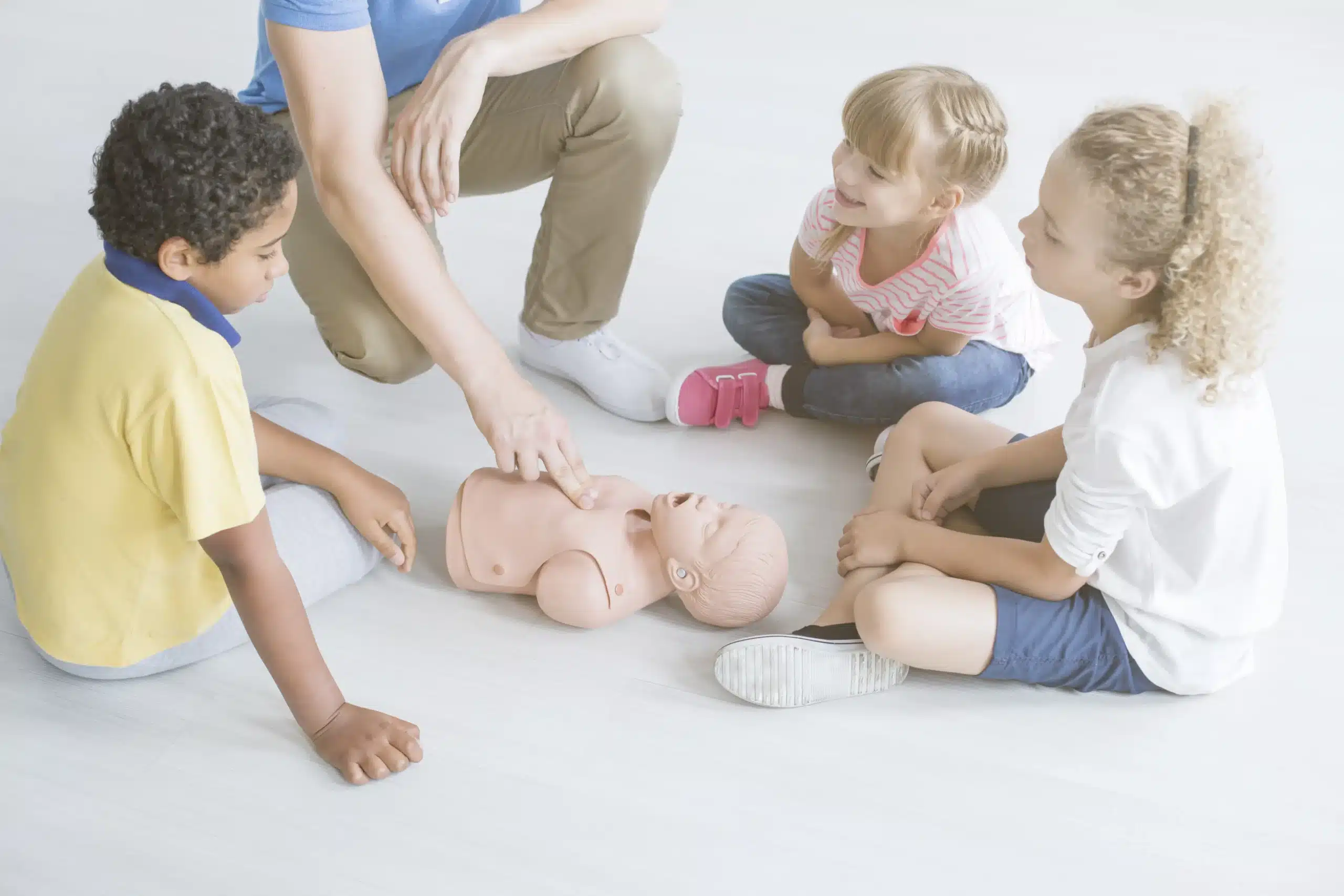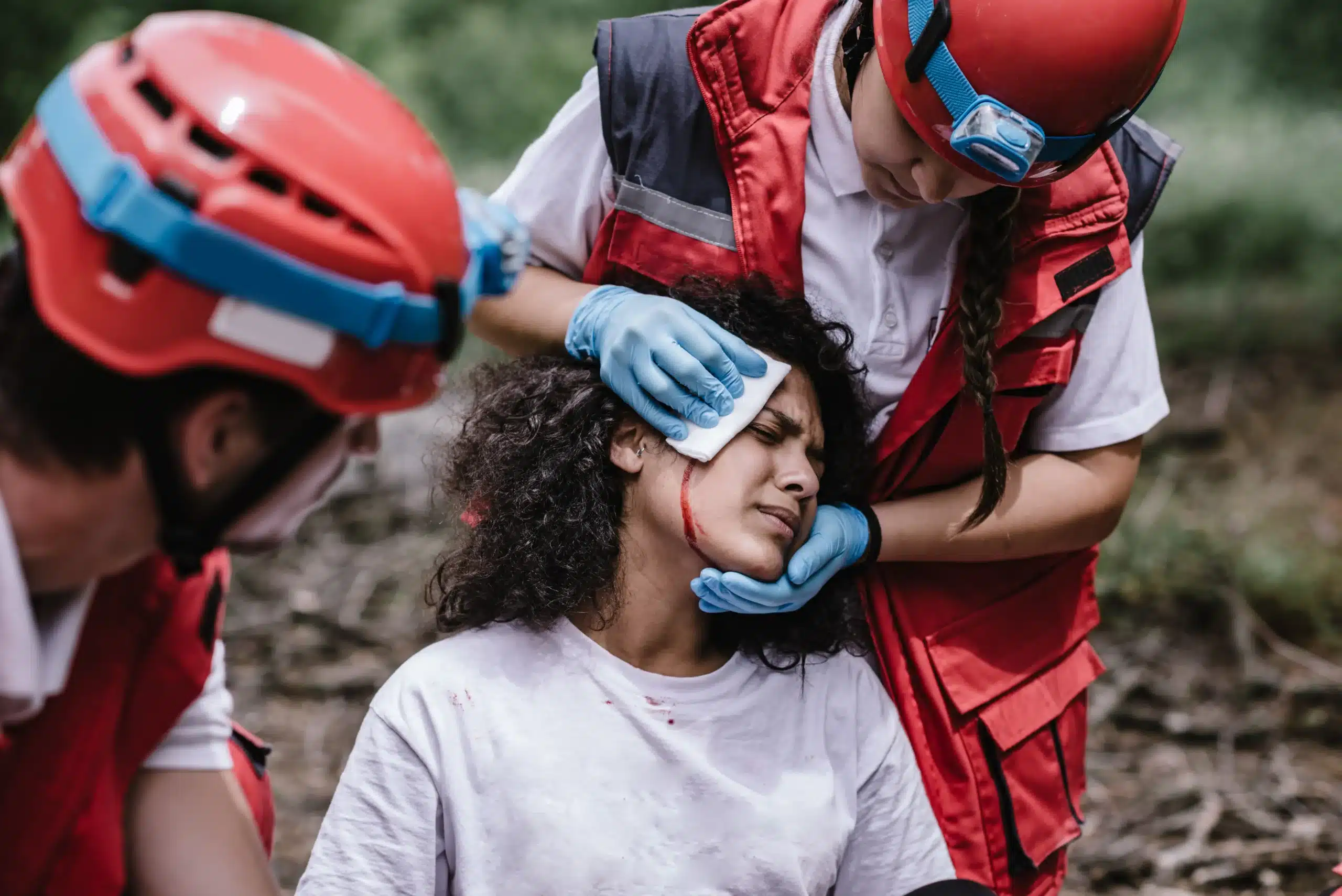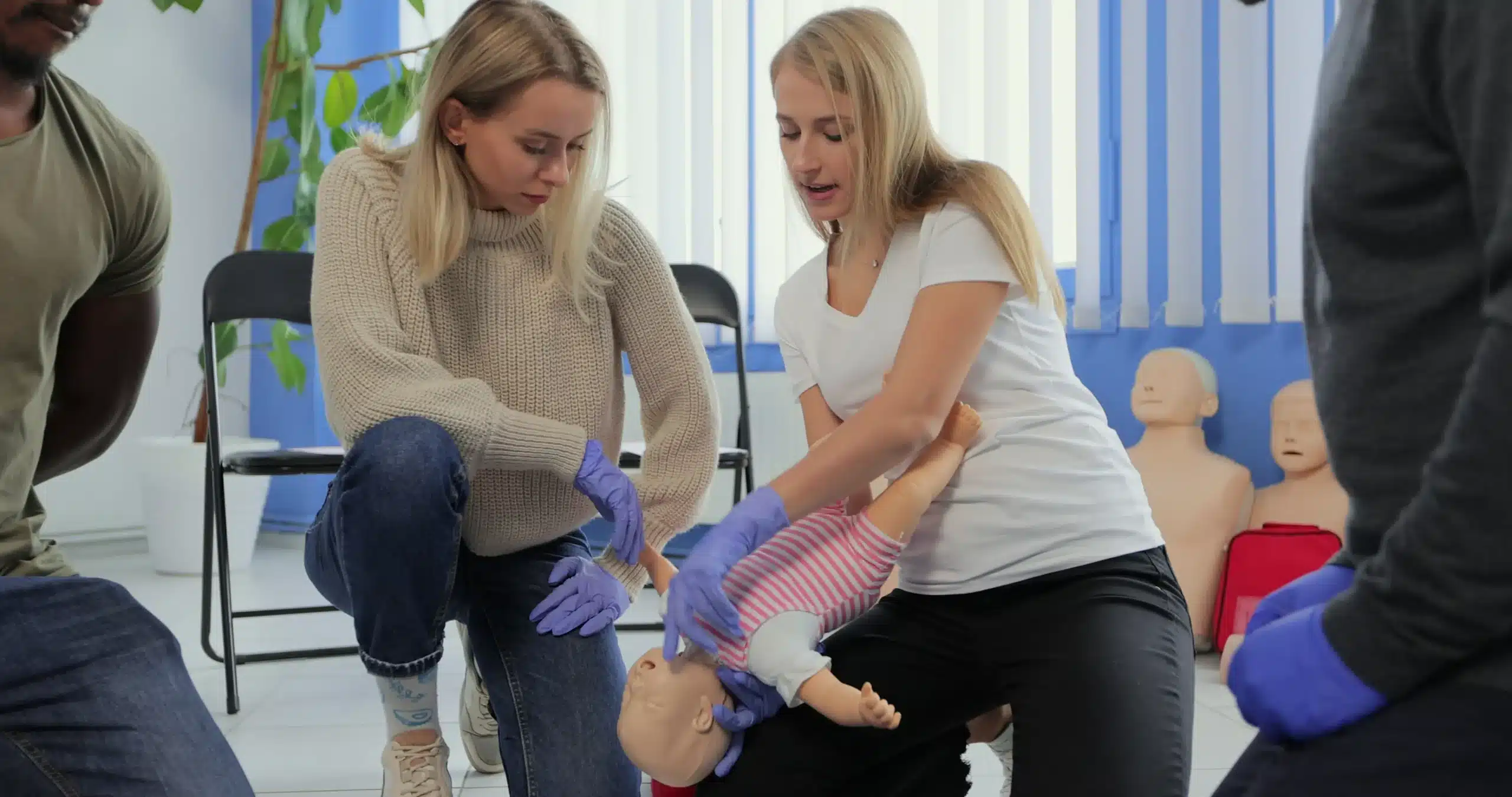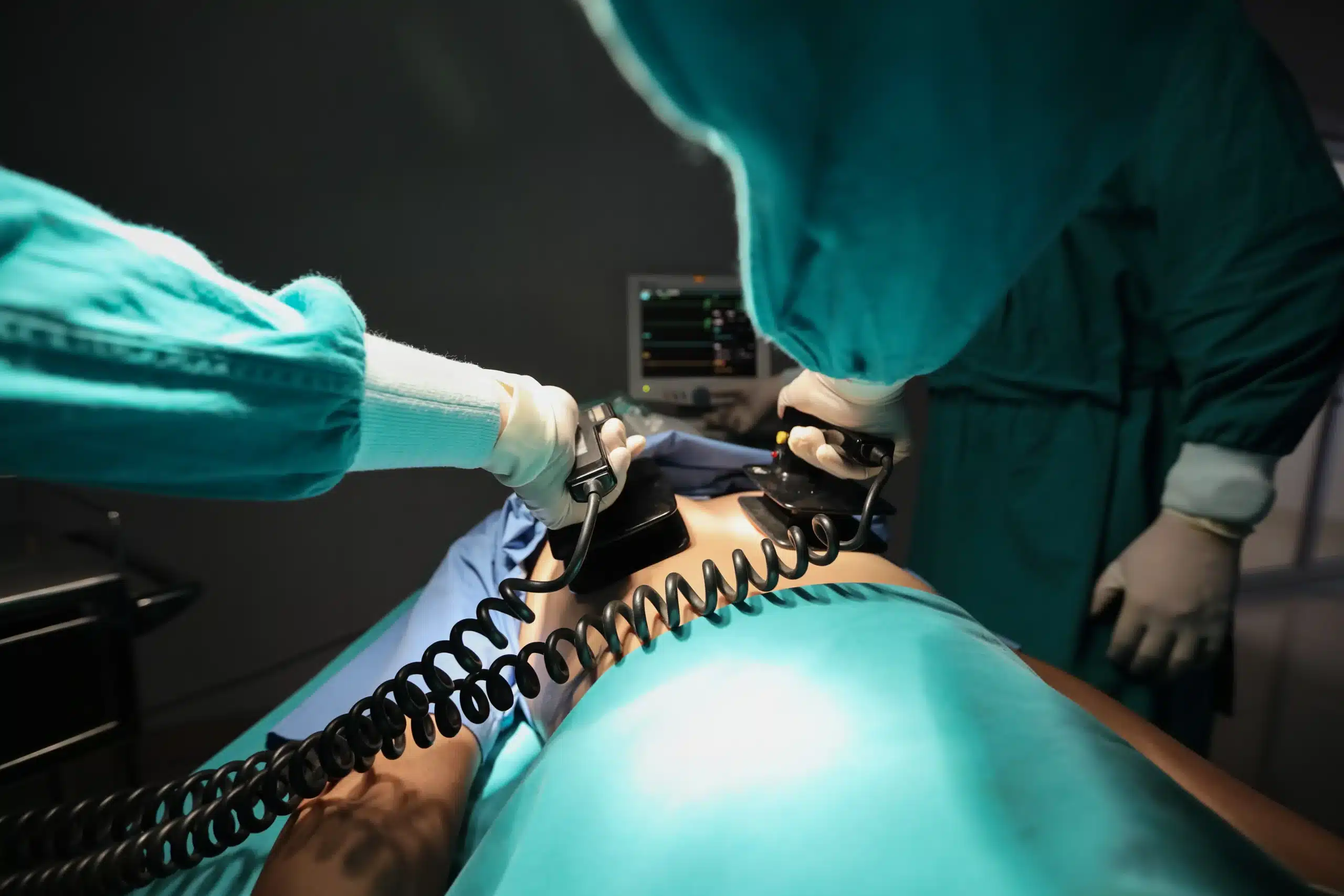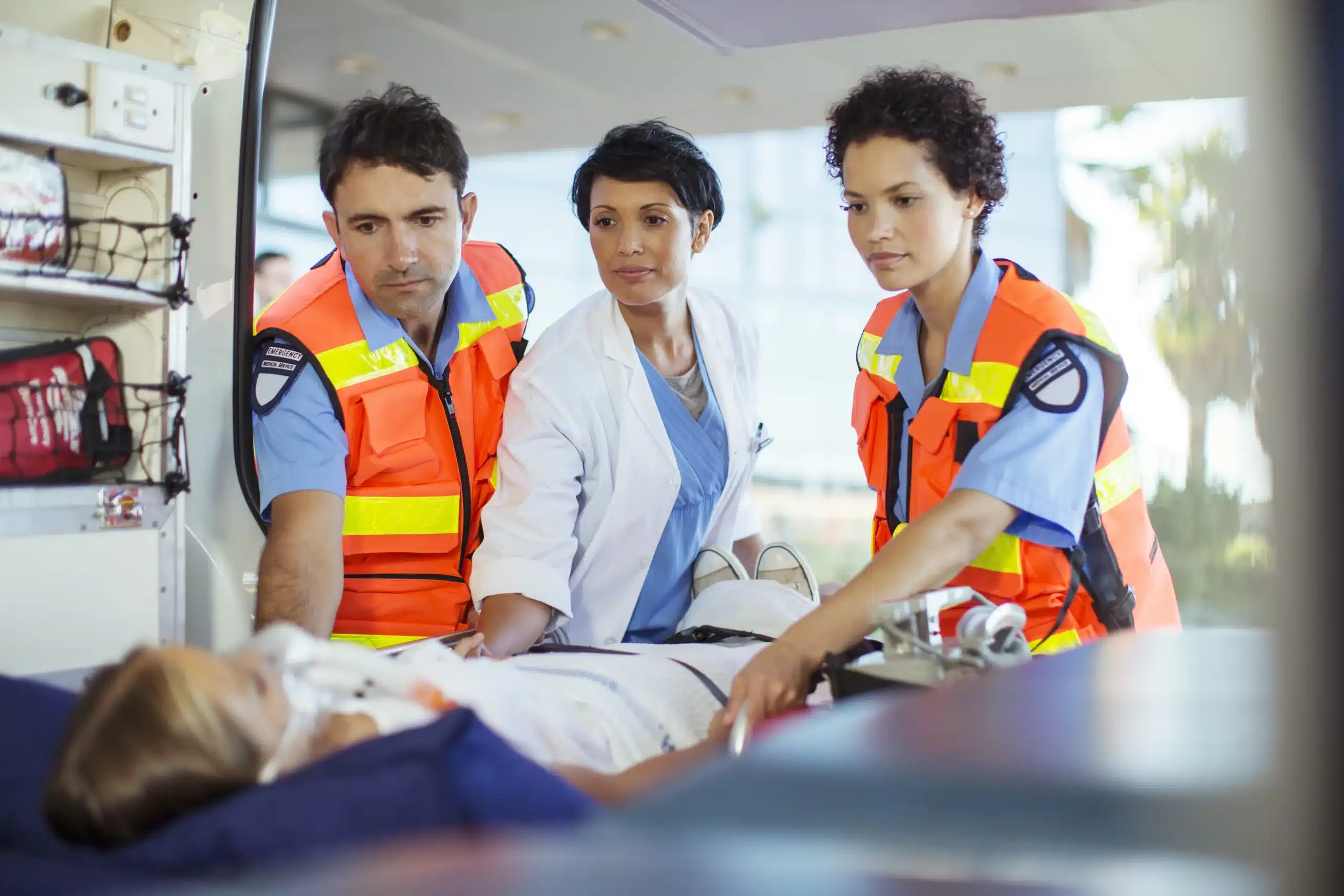Ever feel like you’d freeze in a medical emergency? Like you’d want to help but wouldn’t know how? It’s a common fear, but one you can conquer with Basic Life Support (BLS) training. BLS certification empowers you to confidently respond to critical situations, providing essential care until professional help arrives. It’s about more than just CPR—it’s about equipping yourself with the skills and knowledge to make a real difference when every second counts. If you’ve been searching for “bls training near me,” you’re in the right place. This post will break down everything you need to know about BLS certification, from what it covers to how it can change lives.
Key Takeaways
- BLS training provides essential life-saving skills: Learn CPR, AED use, and airway management techniques to confidently respond to emergencies and provide immediate care.
- Choose a BLS course that fits your needs: Explore different learning formats (in-person, online, or blended) and select a reputable, accredited provider with qualified instructors.
- Stay current with your BLS certification: Recertify every two years and access ongoing resources to maintain your skills and ensure you’re always prepared to help.
What is BLS Training & Why Do You Need It?
Basic Life Support (BLS) certification equips you with the skills to respond to life-threatening emergencies. It’s about more than just CPR—BLS training covers a range of critical skills, including using an automated external defibrillator (AED) and basic airway management. These skills are essential for providing immediate care in the crucial moments before professional medical help arrives. Think of it as the foundation for saving lives.
What You’ll Learn
In a BLS certification course, you’ll learn high-quality CPR techniques for infants, children, and adults. The training covers how to use an AED, rescue breathing, and relieving choking. BLS courses also emphasize the importance of teamwork during CPR, ensuring everyone involved can contribute effectively in a high-pressure situation.
How BLS Saves Lives
BLS certification is so important because it empowers you to act quickly and confidently during emergencies. This rapid response can dramatically improve outcomes, increasing the chances of survival and minimizing long-term complications. Having these skills can make all the difference when every second counts.
Who Needs BLS?
While often associated with healthcare providers, BLS certification is valuable for anyone who wants to be prepared for an emergency. It’s especially relevant for those in roles that involve supervising or caring for others, such as teachers, coaches, childcare providers, and parents. Consider BLS training if you work with children at a summer camp, are responsible for employee training in human resources, or simply want to protect your loved ones. Even if you’re not in a healthcare field, having BLS training can give you the confidence to step up and help when it matters most. It’s a misconception that only medical professionals need these skills—anyone can learn BLS and potentially save a life.
Find BLS Training Near You
Finding the right BLS training program is easier than you think. Whether you prefer online learning or hands-on, in-person classes, several resources can help you find a course that fits your schedule and learning style.
Online Search Tips
Start with a quick online search. Typing “BLS classes near me” into your search engine will generate a list of training providers in your area. You can also search for specific organizations, like the American Heart Association or American Red Cross, if you know you’d prefer to train with a particular group. Online BLS courses have become increasingly popular, offering a convenient way to complete training from anywhere with internet access.
Local Training Organizations
Many local organizations offer BLS training. Check with community centers, hospitals, and fire departments for upcoming courses. These organizations often provide affordable options and cater to residents in the surrounding areas. Obtaining a Basic Life Support (BLS) certification is essential for many healthcare professionals and others in roles requiring emergency response skills. Contacting local training organizations is a great way to find a course that fits your needs. This article highlights the key steps and requirements for BLS certification.
Safety Training Seminars in Livermore
Safety Training Seminars in Livermore offers a range of American Heart Association courses, including BLS, ACLS, and PALS. They also provide additional services such as EMSA Child Care Health & Safety training and discount group classes. Their Livermore location serves Dublin, Livermore, and Mountain House, CA. BLS certification encompasses critical emergency response skills, including CPR, AED usage, and basic airway management. For more information on best practices for BLS certification, check out this resource.
American Heart Association
The American Heart Association is a leading provider of BLS training. They offer a variety of courses, including in-person, online, and blended learning options. BLS training is crucial in many emergencies, and the AHA’s certification training includes AED usage, basic airway management, and techniques for assisting someone who is choking. Their website provides a search tool to help you locate certified training centers near you. This article debunks common misconceptions about BLS.
American Red Cross
The American Red Cross also offers BLS certification courses. They provide training for individuals and organizations, with options for in-person and online learning. The Red Cross offers BLS certification courses across the country, covering CPR, AED use, and relieving obstructed airways. Check their website for course availability and registration information. Here’s an example of their BLS certification offerings.
Hospitals & Community Centers
Many hospitals and community centers offer BLS training courses to their staff and the public. These courses are often taught by experienced healthcare professionals and provide hands-on practice with essential life-saving techniques. Contact your local hospital or community center to inquire about upcoming BLS training opportunities. This resource explains how employers can streamline the certification process for their employees.
Choose the Right BLS Training
Finding the right BLS training means understanding the different learning formats, making sure the course is credible, and confirming the training provider is reputable. Here’s what to consider when choosing a BLS course.
In-Person: Hands-on Learning
In-person BLS certification courses offer hands-on training, covering essential skills like CPR, using an AED, and clearing obstructed airways for adults, children, and infants. These courses often emphasize critical thinking and problem-solving in emergencies. The direct interaction with instructors and other students creates a dynamic learning environment. If you learn best by doing and value face-to-face instruction, in-person training might be your best bet.
Online: Flexibility & Convenience
Online BLS courses provide a flexible way to learn life-saving techniques. You can study at your own pace and from anywhere with an internet connection. These courses cover the same core content as in-person training, including CPR and AED use for all ages. This format is ideal for busy individuals or those who prefer self-directed learning.
Blended Learning
Blended learning combines online coursework with in-person skills sessions. This approach offers flexibility while still providing the hands-on experience crucial for mastering BLS skills. Blended learning can be a great option for those who want a more comprehensive learning experience by practicing techniques and interacting with an instructor.
Evaluate Training Providers
It’s important to carefully evaluate potential training providers. Not all BLS courses are the same, and choosing a reputable provider ensures you receive high-quality training that meets industry standards. Look for established organizations with a track record of providing effective BLS instruction.
Accreditation & Certification
Make sure the BLS certification you choose is accredited by a recognized organization, such as the American Heart Association. Accreditation ensures your certification is widely accepted by employers and meets established quality standards. Employer acceptance is a critical factor, especially if you need BLS certification for your job.
Instructor Qualifications
The qualifications of your instructors directly impact the quality of your training. Look for courses led by certified professionals with extensive experience in BLS. Qualified instructors can provide accurate, up-to-date information and guidance.
Course Reviews & Reputation
Before enrolling in a BLS course, research the training provider’s reputation and read reviews from past participants. Positive feedback can give you confidence in the quality and effectiveness of the training. Look for providers with consistently positive reviews and a strong reputation.
What Happens During BLS Training?
BLS training equips you with the skills to respond to life-threatening emergencies. It’s a comprehensive course covering essential techniques and procedures. Let’s break down what you can expect during a typical BLS training session.
Course Content & Key Techniques
BLS certification covers core skills like high-quality CPR for adults, children, and infants. You’ll learn how to use an automated external defibrillator (AED) and practice basic airway management techniques. The curriculum also emphasizes the importance of teamwork and communication during emergencies. Many courses align with the latest American Heart Association guidelines to ensure you receive up-to-date training. You’ll also cover topics like recognizing the signs of a heart attack or stroke.
Hands-on Practice
BLS training isn’t just about lectures and textbooks. You’ll participate in realistic, scenario-based simulations to practice your skills. This hands-on approach helps build muscle memory and confidence, preparing you to respond effectively under pressure. You’ll work with training manikins and AED trainers to simulate real-life emergency situations. This practical experience is invaluable in solidifying your understanding of the techniques. For example, you might practice chest compressions and rescue breaths on an infant manikin.
Assessment & Certification
To receive your BLS certification, you’ll need to demonstrate your proficiency through both written and practical exams. The written exam tests your knowledge of the course material, while the practical exam evaluates your ability to perform the learned skills. Upon successful completion, you’ll receive a certification card, typically valid for two years. This nationally recognized credential validates your skills and knowledge to potential employers and healthcare organizations. Some programs, like those offered by the American Red Cross, provide digital certificates for easy access and verification.
Costs & Discounts
While cost is a factor when considering any training, BLS certification is an investment in your skills and ability to help others. Many providers offer competitive pricing and discounts for group classes. Explore options like payment plans or check with your employer about potential reimbursement. Remember, the value of being prepared to save a life far outweighs the upfront cost of the training. Consider it an investment in your community’s safety and well-being.
Maintain Your BLS Certification
Once you’ve earned your BLS certification, staying current is key. Knowing how and when to recertify ensures you’re always prepared to respond to emergencies effectively. Here’s what’s involved in maintaining your BLS skills.
Why Recertify?
BLS certification expires every two years. Recertification demonstrates your commitment to providing high-quality care and confirms your knowledge of the latest life-saving techniques. Plus, most healthcare employers require current BLS certification. Understanding recertification requirements helps you avoid career setbacks. At Safety Training Seminars, we make recertification straightforward. Our courses cover everything you need to renew your skills and get your updated certification card. Check out our BLS recertification courses for more info.
Stay Updated
Staying on top of the latest BLS guidelines is crucial for providing effective care. These guidelines can change, so staying current ensures you’re using the most effective techniques. Resources like the American Heart Association website offer valuable information on updates and recommendations. Regularly reviewing these resources can help you avoid common pitfalls during your BLS recertification test.
Post-Training Support
Even after completing your BLS training, continued learning is important. Look for training providers that offer resources and support beyond the initial course. This might include refresher materials, online communities, or access to instructors. Online BLS courses often provide flexible options for ongoing learning. At Safety Training Seminars, we offer various resources and support to help you maintain your skills and confidence after you complete your training.
Related Articles
- BLS Classes in Dublin: Your Complete Guide – Livermore CPR Classes
- BLS Certification in Mountain House: Your Guide – Livermore CPR Classes
- Essential Guide to BLS Courses in Mountain House – Livermore CPR Classes
- BLS Training in Livermore: Your Comprehensive Guide – Livermore CPR Classes
- BLS Renewal in Dublin: A Simple Guide – Livermore CPR Classes
Frequently Asked Questions
Is BLS certification only for healthcare professionals? Not at all! While it’s definitely a requirement for many healthcare jobs, BLS certification is a valuable skill for anyone to have. Think teachers, coaches, parents, or anyone who works with children. It’s about being prepared to help in a crisis, no matter your profession.
What’s the difference between online and in-person BLS training? Both online and in-person BLS courses cover the same core material, like CPR, AED use, and airway management. The main difference is the learning environment. In-person classes offer hands-on practice and direct interaction with an instructor, while online courses provide more flexibility for those with busy schedules. Blended learning combines the best of both worlds, offering online coursework and in-person skills sessions.
How long does BLS certification last, and how do I renew it? BLS certification is typically valid for two years. To renew, you’ll need to take a recertification course. This ensures you stay up-to-date on the latest guidelines and best practices for providing high-quality CPR and emergency care.
How much does BLS training cost? The cost of BLS training varies depending on the provider and the type of course you choose (online, in-person, or blended). Many providers offer group discounts, and some employers may cover the cost of training for their employees. It’s always a good idea to compare prices and check for any available discounts before enrolling.
What if I have more questions about BLS training? If you have additional questions or need help finding a BLS course near you, reach out to a local training center or a nationally recognized organization like the American Heart Association or the American Red Cross. They can provide more specific information and guidance based on your individual needs.
